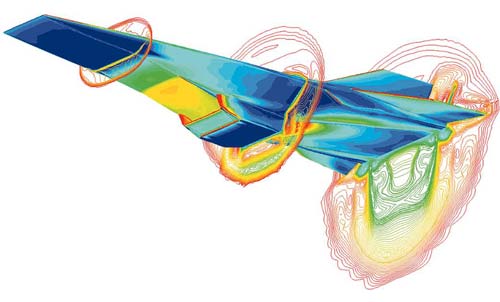fluid dynamics

Computational fluid dynamics (CFD) image of the Hyper-X vehicle at a Mach 7 test condition with the engine operating. Credit: NASA.
Fluid mechanics is one of the oldest and broadest fields of engineering. It deals with the properties and behavior of fluids, i.e., liquids and gases at rest (fluid statics) or in motion (fluid dynamics). Because of their ability to flow, liquids and gases have many properties in common not shared by solids.
The study of fluids in motion, or fluid dynamics, makes up the larger part of fluid mechanics. Branches of fluid dynamics include hydrodynamics (study of liquids in motion) and aerodynamics (study of gases in motion) as well as vortex dynamics, gas dynamics, computational fluid dynamics (CFD), convection heat transfer, flows of turbo machinery, acoustics, bio-fluids, physical oceanography, atmospheric dynamics, wind engineering, and the dynamics of two-phase flows.
Modern design of aircraft, spacecraft, automobiles, ships, land and marine structures, power and propulsion systems, or heat exchangers relies on a clear understanding of the relevant fluid mechanics.


